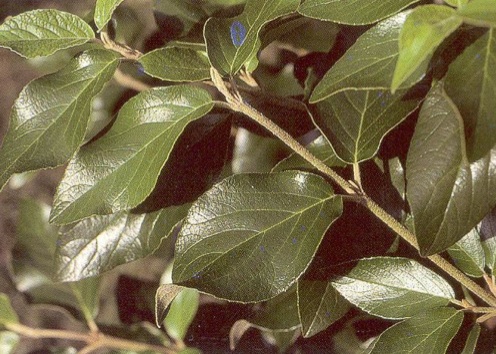| PSC 2620: Woody Trees and Shrub | Course Home | Week 9 |
Viburnum x burkwoodii - Burkwood Viburnum
Plant Viewer
 |
 |
| The Burkwood Viburnum is a large shrub with an upright form. | The leaf is 1-4 inches long and ovate in shape. The margin has a very slight serration. |
 |
|
| The flowers have a strong spicy fragrance. They form on 2-3 inch cymes during the spring. |
Plant Description
Viburnum x burkwoodii is a medium to large shrub, growing 8-10 feet high and 6-8 feet wide. It has an upright vase shape, with multiple large stems emanating from the base. White it rarely grows too dense, it can become tangled looking and should be regularly pruned to maintain the best shape. It is a very adaptable plant, able to handle drought and a wide variety of soil conditions.
The leaves are ovate or elliptic and 1-4 inches long and arranged oppositely on the stem. The margin is just slightly toothed, and can sometimes be more easily felt by running a finger along the leaf edge than seen. The veins are somewhat arcuate in pattern and are set into the leaf, making them very visible. The top of the leaf is dark green and the bottom of the leaf is a silver-green color and covered with fine hairs. The petiole is pubescent. In fall the leaves turn a purplish red color.
Large clusters of white flowers appear in spring. The flower emerge from bright pink buds (showy in their own manner), and are held on rounded cymes 2-3 inches wide. The flowers have a sweet and spicy fragrance to them. Following the blooming, black fruit forms in clusters on the bush. Each drupe fruit is 1/3 inch in diameter. The fruit is not as profuse as on many other species of Vibrunum
Landscape Use
It is well suited to use as a hedge or in shrub border plantings. It is a good choice for planting next to a window or near an outdoor space where the sweet fragrance can be enjoyed during the spring.
Points of Interest
Leaf spot is a common problem. It is also highly susceptible to sulfur spray, which will cause the plant to defoliate, so care should be taken when using chemicals in the landscapes that those containing sulphur are not applied.